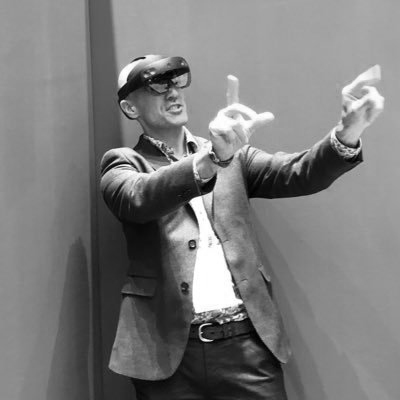- Technology
- SEE MORE
- classical
- general
- talk
- News
- Family
- Bürgerfunk
- pop
- Islam
- soul
- jazz
- Comedy
- humor
- wissenschaft
- opera
- baroque
- gesellschaft
- theater
- Local
- alternative
- electro
- rock
- rap
- lifestyle
- Music
- como
- RNE
- ballads
- greek
- Buddhism
- deportes
- christian
- piano
- djs
- Dance
- dutch
- flamenco
- social
- hope
- christian rock
- academia
- afrique
- Business
- musique
- ελληνική-μουσική
- religion
- World radio
- Zarzuela
- travel
- World
- NFL
- media
- Art
- public
- Sports
- Gospel
- st.
- baptist
- Leisure
- Kids & Family
- musical
- club
- Culture
- Health & Fitness
- True Crime
- Fiction
- children
- Society & Culture
- TV & Film
- gold
- kunst
- música
- gay
- Natural
- a
- francais
- bach
- economics
- kultur
- evangelical
- tech
- Opinion
- Government
- gaming
- College
- technik
- History
- Jesus
- Health
- movies
- radio
- services
- Church
- podcast
- Education
- international
- Transportation
- Other
- kids
- podcasts
- philadelphia
- Noticias
- love
- sport
- Salud
- film
- and
- 4chan
- Disco
- Stories
- fashion
- Arts
- interviews
- hardstyle
- entertainment
- humour
- medieval
- literature
- alma
- Cultura
- video
- TV
- Science
- en
Printing a Model of Light with XR, featuring Bentleys Greg Demchak

Used to be the best way to plan a three-dimensional construction project was on a two-dimensional blueprint, or perhaps a wooden model. We live in an era where entire digital twins \u2014 models made of light \u2014 can be used, but not everyone is. Bentley Systems\u2019 Greg Demchak drops by to explain why that needs to change.\n\n\n\n\n\n\n\nAlan: Thank you for joining the XR for Business Podcast with your host Alan Smithson. Today\u2019s guest is Greg Demchak from Bentley Systems. Greg has been designing and driving the development of immersive digital simulation for architecture, engineering, and construction markets for the last 20 years. Educated as an architect, he transitioned to software design after completing a degree in design computation at MIT. He went on to become a senior user experience designer for the Autodesk Revit product, product manager for SYNCHRO 4D software platform \u2014 now owned by Bentley Systems \u2014 and currently leads the mixed reality team for Bentley Systems. He\u2019s been pushing the envelope of this technology and software for the Microsoft Hololens, and recently built an app for the global launch event of the next generation Hololens 2. To learn more about the work that Greg and his team at Bentley are doing, visit bentley.com. Greg, welcome to the show.\n\n\n\nGreg: Thanks, Alan. How\u2019s it\ngoing?\n\n\n\nAlan: It\u2019s going fantastic. I\nwanted to say thank you so much for taking the time to join us here.\nAnd let\u2019s kind of unpack the work that you do at Bentley Systems.\nFrom a 10,000 foot view, what do you guys do?\n\n\n\nGreg: Yeah. So Bentley Systems\n\u2014 just to frame that \u2014 is a global software company focused on\nengineering and infrastructure, architecture, and construction\nsoftware. So it\u2019s\u2013 we basically produce software for the built\nenvironment. So anything from bridge design, to high-rise\nconstruction, to infrastructure that needs to be modeled. And it\u2019s a\nplatform that serves that industry across the board.\n\n\n\nAlan: Well, that\u2019s a big\nindustry, considering there\u2019s the equivalent of Manhattan, the size\nof Manhattan being built every single month somewhere in the world.\nSo you work with large infrastructure projects, building skyscrapers,\nbridges, infrastructure. How does XR fit into that?\n\n\n\nGreg: It\u2019s a good question. So\nthe way we see XR fitting into this is\u2013 and you\u2019ll see this term,\nit\u2019s really becoming \u2014 I think \u2014 quite popular now in the industry,\nis this idea of the digital twin. And what started out as 2D drafting\nand then sort of evolved into 3D models, and then this idea of\nbuilding information modeling is evolving into this idea of the\ndigital twin, which is that any given building or asset or a piece of\ninfrastructure can have a parallel digital representation of itself\nas a 3D model, and then also now as a 4D model, which is to say that\nthe model evolves and changes through time, just like the physical\nbuilding. And the XR piece is a really cool way to basically bridge\nthat digital and physical space in a kind of a natural way. So that\u2019s\nwhere we are developing on top of the Hololens platform. It\u2019s\nbasically a way to take those digital assets, and then render those\nassets as digital artifacts or 3D models or information in the\ncontext of the physical space. So that\u2019s had the opportunity. These\nbuildings, these infrastructure assets are evolving and changing over\ntime. And you can basically render digital parts of that through the\nHololens and see a mixed reality view of the world.\n\n\n\nAlan: So, for example, you\u2019ve\ngot a\u2013 let\u2019s just use a building, a skyscraper, you\u2019re building a\nbuilding, you\u2019ve got the Revit models or the BIM models or the CAD\nmodels. So let\u2019